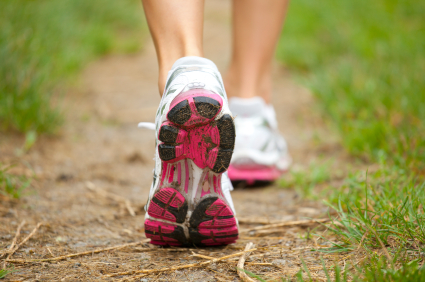 As we get older, many of us are plagued with some type of physical limitation. Whether you suffer from arthritis, a recurring injury, back problems or a heart condition, these and many other chronic ailments can affect your survival in a post-disaster world.
As we get older, many of us are plagued with some type of physical limitation. Whether you suffer from arthritis, a recurring injury, back problems or a heart condition, these and many other chronic ailments can affect your survival in a post-disaster world.
Recognizing our physical weaknesses and figuring out how to make things work despite those weakness will be vital to our survival. I seriously injured my back nearly two years ago. I spent 6 months hardly being able to walk, and then another year doing physical therapy. I am greatly improved but I have to face the fact that I will probably never be a “jock” again. Before I was into lifting heavy weights at the gym and 10K walks were a twice weekly occurrence for me. On the weekend I thought nothing of scrambling up and down steep hikes, in some places so difficult that I had to pull myself up with my hands.
Now, if I walk more than a mile or two, I start getting a horrible throbbing in my lower back as the discs become irritated and inflamed. The least wrong move can set off spasms that lay me out for a couple of days. And truth be told, I suspect that it isn’t going to get much better than this.
So I’ve been learning ways to accommodate myself.
When heavy lifting is required, I make use of things like levers and dolly carts as much as possible to spare the wear and tear on my poor spine. I am also very careful to use good form, lifting with my legs instead of my back. I have all sorts of little gadgets like the disks that go beneath the legs of your furniture to make getting heavy things from A to B a bit easier.
I garden a lot, which requires painful bending and stooping. I’ve gotten myself numerous pairs of cheap kneepads and I wear them in the garden. I have made my rows a little wider to allow myself room to basically crawl around a bit instead of constantly stooping over. It isn’t particularly dignified but I can work for hours this way, vs. about 15 minutes standing and bending.
My point is that if you recognize now what your limits are you can strive to….
1.) Accommodate your limitations using tools or techniques. Some items might need to be purchased now while goods are readily available. I have the afore mentioned sliding discs for moving things in the house, excellent gardening tools which require less physical strength to use, a dolly cart and a wheelbarrow. Proper lifting techniques and the use of levers can go far to reduce the wear and tear on an aching back.
2.) Repair that which is repairable. If the surgery on my back had a high success rate, I would do it, but the improvement that can be made is minimal and the chances that it will help at all are only 50/50. It’s too much of a risk. However, many conditions ARE repairable, and if that is the case, you should do what you can to fix them now.
3.) Work to achieve your maximum improvement. My workouts are way different than they used to be, but I still do work out regularly. I walk daily, I do yoga and Pilates and I perform bodyweight exercises like push-ups, lunges and squats to keep myself active and as strong as I can be, given my physical situation. Depending on your situation, different exercises might target your weaknesses.
4.) Improve your nutrition through good food and supplements. Many joint issues can show vast improvement with supplements such as glucosamine and lysine. Healthy fats such as Omega-3 fatty acids can also help joint health. Other supplements can improve heart health and blood pressure can be significantly improved by changes in diet.
5.) Learn to do things NOW. Many people seem to think that post-disaster, they will drop their city life and pampered habits and bring forth food from the earth. Ummm….it’s not that easy! Practice your plan while you still have the grocery store to rely on as a back-up. This will allow you to figure out methods that work for your location and to decide if it is even feasible, with your physical condition, for you to do so. It’s better to find out now that you are not physically capable of hunting for a moose, killing it and dragging it home than to find out when your family is starving and looking to you to provide the next meal. If you discover Plan A is not going to work, you can begin to create Plans B and C.
Above all things, be realistic. Don’t be an armchair Rambo, planning to slink around the forest with black-out paint on your face and a knife in your hand, when you cannot walk your dog for a half mile to the park without excruciating pain. Seriously scrutinize your capabilities and make your survival plans accordingly.
This article was originally published at Ready Nutrition™ on September 20th, 2013






